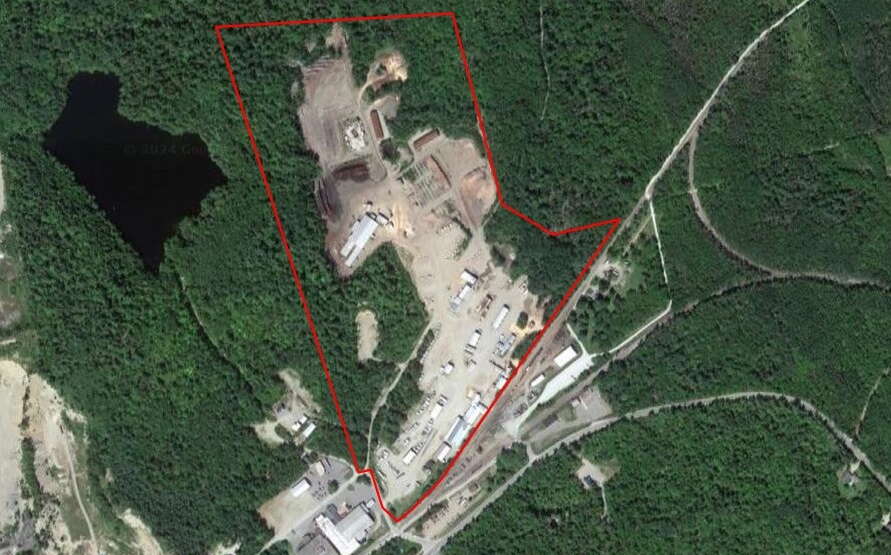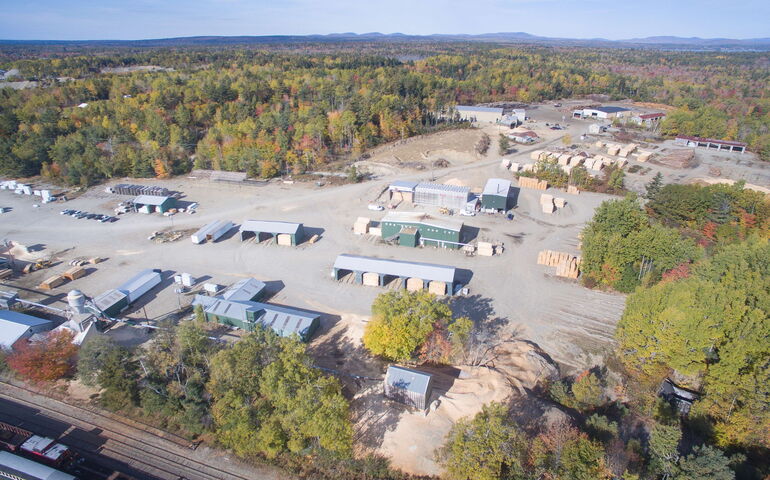
'Very rare': Robbins Lumber looks to sell 100-acre Hancock mill for $2.5M
 COURTESY / ROBBINS LUMBER INC.
The industrial property in Hancock includes 108,655 square feet across 22 buildings.
COURTESY / ROBBINS LUMBER INC.
The industrial property in Hancock includes 108,655 square feet across 22 buildings.
Robbins Lumber Inc., a lumber manufacturer and distributor headquartered in Searsmont, has listed its 100-acre mill complex at 17 Wyman Road in Hancock.
David Jones and Robert Baldacci of F.O. Bailey Real Estate are handling the listing, which went live earlier this week with a price of $2.5 million.
The property has 108,655 square feet across 22 buildings, which include warehouses, storage buildings, an office building and a fully leased apartment building.
Equipment includes kilns, a planer mill, a commercial truck scale and a 42,000-square-foot sawmill with an attached fabrication machine shop.
In the sawmill building, there’s also a large bridge crane. The listing says that could be useful to a boat builder or other heavy fabricator.

The plant, a mile from Route 1 and downtown Ellsworth, is being marketed as an “excellent redevelopment opportunity, zoned for uses such as a business park or campground given its prime location adjacent to the Downeast Sunrise Trail.”
There’s also potential for gravel deposits, the listing says.
Robbins Lumber acquired the Hancock sawmill and one in Sanford from Pleasant River Lumber Co. in 2023, expanding the company’s footprint from two locations to four.
The company specializes in Eastern white pine production and will continue to operate its other facilities elsewhere in Maine.
Immediate attention
“It’s very rare to see something of this size and scope” in the region, Baldacci told Mainebiz. “It’s a prime industrial business park opportunity for Hancock and Washington counties.”
The listing immediately garnered attention.
The real estate firm has already received a number of inquiries, has started to show the property, and is following up on several confidentiality agreements, he said.
Inquiries are coming from potential owner/users and from investors. They include businesses in the lumber industry as well as commercial real estate investors who see an opportunity for development, he said.
Some of the buildings are in excellent shape and others could be cleared, according to Baldacci. The age of the buildings range from the 1970s to the 1990s.
Mill histories
Robbins Lumber is co-owned by siblings Catherine Robbins-Halsted, Jim Robbins and Alden Robbins. They are the fifth generation of the family to own and manage the operation, which has been in business since 1881.
Frank and Otis Robbins opened the first Robbins Lumber stave mill in 1881 on the St. George River. Today, Robbins Lumber owns and manages 30,000 acres of forestland and buys logs from more than 150 independent loggers.
In addition to its base in Searsmont, the company has facilities in East Baldwin and Sanford. The main location is a 40-acre site with a milling operation. There's also an 8.5-megawatt biomass plant that can convert that waste wood into energy, a computerized sawmill, planing mills and 70,000 square feet of warehouse space.
Robbins Lumber has specialized since it began in Eastern white pine production. The tree is plentiful in Maine due to its liking for glacial soils.
“We developed a niche market,” said Jim Robbins.
The company is one of the top three Eastern white pine producers in New England, he said. It produces 60 million board feet per year and employs about 225 people across its facilities, shipping across the U.S., to Canada and other countries.
Pleasant River bought the Hancock site, with annual production capacity of 13 million board feet, from Crobb Box in 2011. The Sanford site was purchased from Lavalley Lumber Co. Inc. in 2012.
Machine failure
Jim Robbins, the company’s president, said a major machine failure prompted the sale.
The specialized machine center, responsible for 60% of the Hancock plant’s production, failed a couple of weeks after the company bought the Hancock plant. The company continued to operate at reduced capacity while also looking into replacement machinery.
But it would have taken two years to get the replacement, leaving the mill at reduced capacity that wasn’t sustainable, he said.
At the time of purchase, the Hancock mill had about 25 employees, some of whom have taken up the offer of jobs at the Searsmont plant.
“A commercial property in Downeast Maine is not very common,” said Robbins. “The site has enormous potential.”









0 Comments